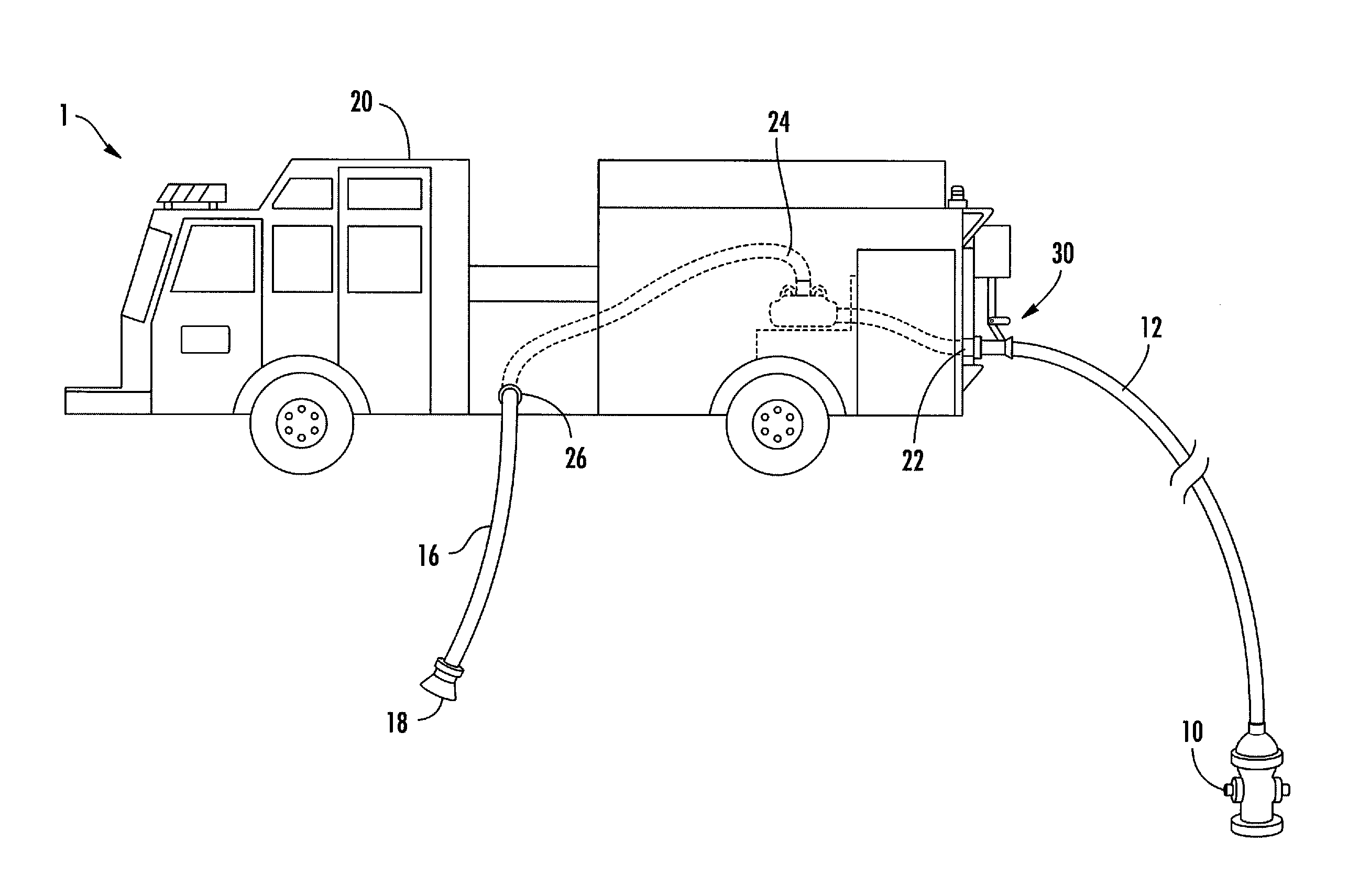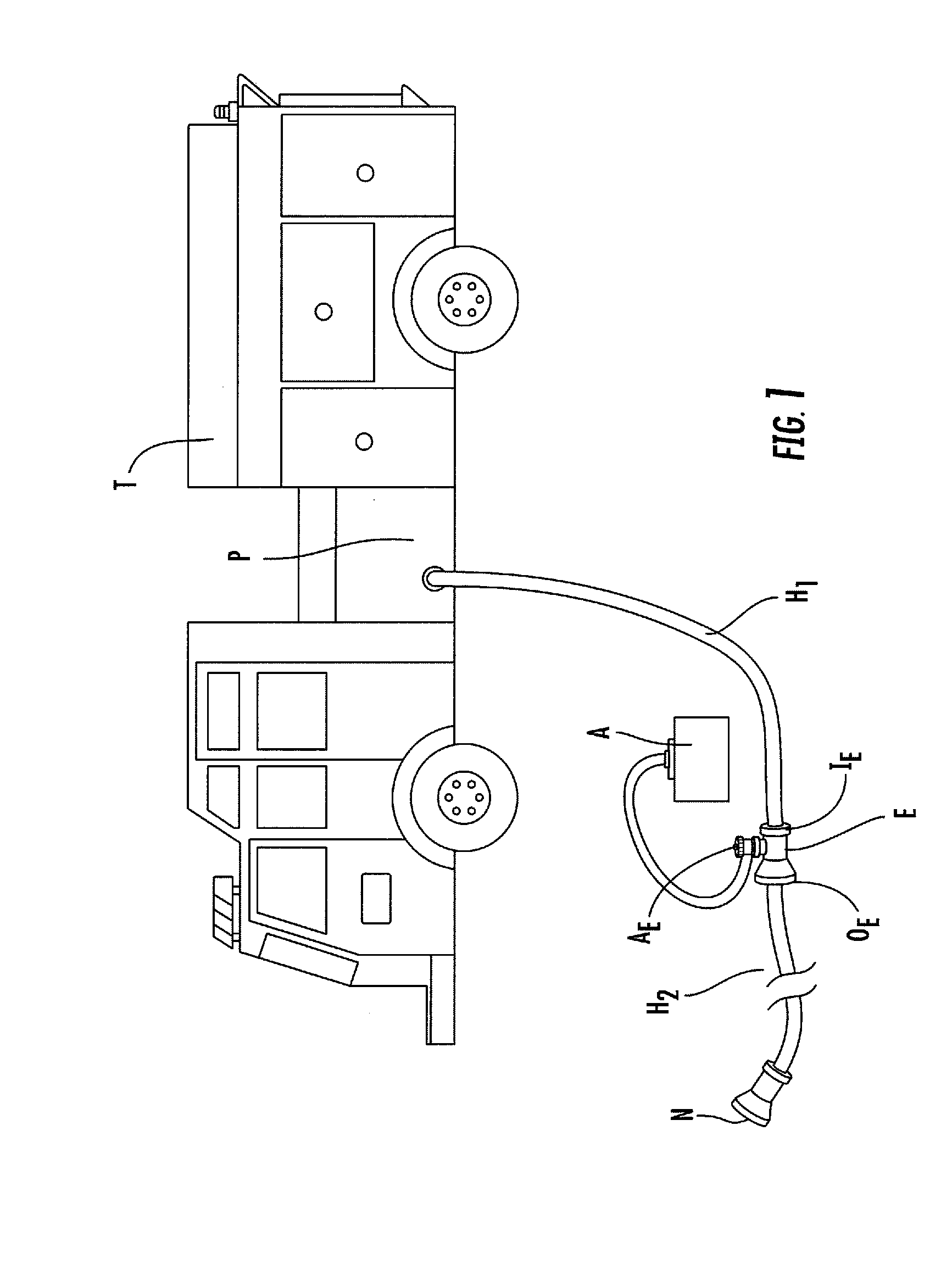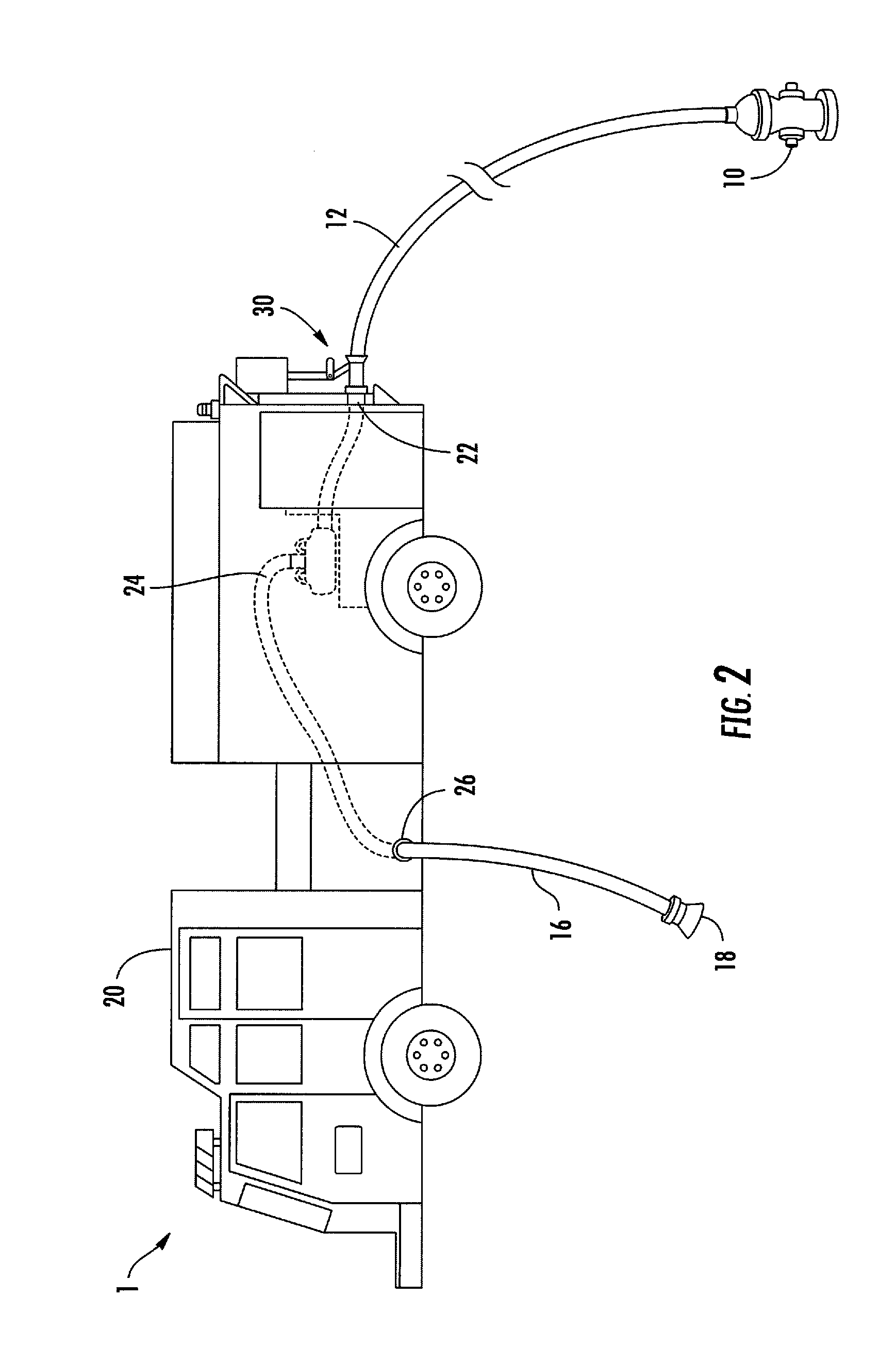Method and apparatus for improving fire prevention and extinguishment
a technology of fire prevention and extinguishing, applied in the field of fire fighting, can solve the problems of suffocating fire, deprived fire of oxygen, and insufficient water pressure of water tenders and/or alternate water supplies
- Summary
- Abstract
- Description
- Claims
- Application Information
AI Technical Summary
Benefits of technology
Problems solved by technology
Method used
Image
Examples
Embodiment Construction
[0029]Detailed embodiments of the instant invention are disclosed herein, however, it is to be understood that the disclosed embodiments are merely exemplary of the invention, which may be embodied in various forms. Therefore, specific functional and structural details disclosed herein are not to be interpreted as limiting, but merely as a basis for the claims and as a representative basis for teaching one skilled in the art to various employ the present invention in virtually any appropriately detailed structure.
[0030]Referring now to FIGS. 1-7, wherein like elements are numbered consistently throughout. FIG. 1 illustrates one example or approach using additives for fire extinguishment and prevention. High pressure water from a pumping unit P is lead through a hose H1 from a mobile fire fighting apparatus T to an eductor E, specifically an inlet IE on the eductor member E. As the water passes through the eductor member E and exits through the outlet OE on the eductor member E sucti...
PUM
 Login to View More
Login to View More Abstract
Description
Claims
Application Information
 Login to View More
Login to View More - R&D
- Intellectual Property
- Life Sciences
- Materials
- Tech Scout
- Unparalleled Data Quality
- Higher Quality Content
- 60% Fewer Hallucinations
Browse by: Latest US Patents, China's latest patents, Technical Efficacy Thesaurus, Application Domain, Technology Topic, Popular Technical Reports.
© 2025 PatSnap. All rights reserved.Legal|Privacy policy|Modern Slavery Act Transparency Statement|Sitemap|About US| Contact US: help@patsnap.com



